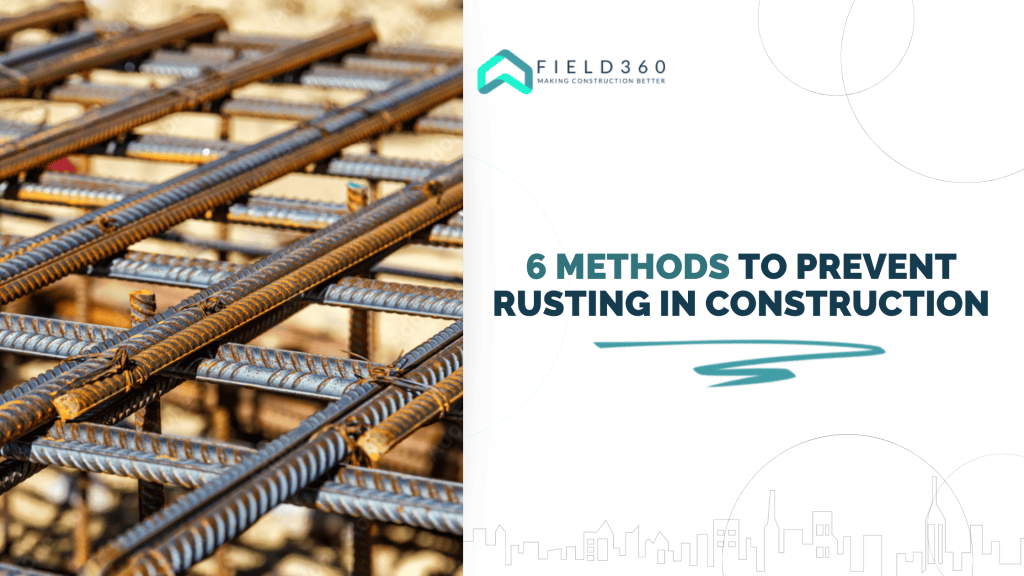Home / Blog / Construction Management / What is Beam in Construction – Purpose, Types And Benefits
No construction project is complete without the use of beams in construction. Beams and columns in building construction are integral types of structural elements that constructors and civil engineers must be acquainted with. These construction elements are of huge importance when it comes to how weight is divided in a construction project. The purpose of the beam in the building is to make sure that the base of the construction is tightly held onto the ground. There are many types of beams in house construction such as overhanging, fixed, trussed, runner beams in construction, continuous, and simply supported beams.
In this section, we will provide knowledge about beams in civil engineering and the types of beams in house construction. We will also discuss the purpose of beam and intermediate beam in construction. We will conclude the blog with the benefits of beam in civil engineering followed by the best hack to manage your construction projects in a click.
What is Beam in Construction?
A beam in civil engineering is a horizontal structural element that resists vertical loads, shear forces, and bending moments. In simple words, beams in construction are employed to support the weight of floors, ceilings, and roofs. The purpose of beams is to transfer the load to a vertical load-bearing structure, locally known as a lintel. Floor joists, roof rafters, and girders are common types of beams in house construction.
Beams and columns in building construction create open spaces to support the building structure above. Types of beams can be classified on two bases – by material and by level of support. The shape of the beam in construction varies depending on the material and functions, ranging from Solid rectangular, I-shaped (flange and web), T-shaped (flange and web), and boxed beam.
Purpose of Beams in Building
Beams in civil engineering directly support the weight of floors, ceilings, roofs, and walls. They distribute the weight they carry to columns, foundations, or other structural elements. The purpose of the beam is to allow for open spaces below by spanning across openings like doorways, windows, and larger areas. Beams can support additional structural elements like trusses, arches, and mezzanines.
Beams also increase the rigidity and stability of structures, resisting lateral forces like wind and seismic loads. Beams in construction create architectural features that exposed beams can be an aesthetically pleasing design element, adding character and warmth to our building project.
What are the 4 Types of Beams Classified by Material?
The 4 types of beams in construction when fractionated by material are wood, steel, reinforced concrete, and prestressed concrete.
1. Wood Beams in Construction
Timber, LVL, and Glulam are types of wood beams in construction and are sustainable. One of the main advantages of wood beams and columns in building construction is that they are readily available and easy to work with. Wood Beams are considered good for aesthetics but are often marked out due to a lower strength-to-weight ratio. Wood is also susceptible to fire and can catch moisture and insects smoothly.
2. Steel Beams in Construction
Steel beams have high strength and are a versatile choice for civil engineers. Due to their property of fire resistance and recyclability, steel beams in construction are a good option. However, they’re expensive compared to other alternatives and require specialized fabrication. They’re also sensitive to corrosion.
3. Reinforced Concrete Beams in Construction
Reinforced Concrete Beams are fire-resistant and have good compression strength for a building element. They are also readily available. Reinforced Concrete beams in construction are heavy and require formwork. But they crack in no time and need corrosion protection.
4. Prestressed Concrete Beams in Construction
Slabs and precast beams in construction are examples of Prestressed Concrete beams. They have a high strength-to-weight ratio but require specialized manufacturing. Prestressed beams have long spans and are immune to fire. Their usage and design are more complex and susceptible to cracking. They are commonly used in the making of bridges, parking structures, and large buildings.
What Are 3 Types of Beams Based on the Support?
|
Type of Beam
|
Description
|
Advantages
|
Disadvantages
|
Example
|
|---|---|---|---|---|
|
Simply Supported Beam
|
The beam rests on two supports at its ends, creating two equal spans.
|
- Easy to design and analyze | Efficient material usage | Good for shorter spans
|
Limited load capacity for longer spans | More deflection compared to other types
|
Floor joist, roof rafter
|
|
Cantilever Beam
|
The beam projects outward from a single support, anchored at one end.
|
Creates free space underneath | Efficient for overhanging structures | Can support concentrated loads at the free end
|
Requires strong anchorage due to high bending moment | High deflection at the free end | Limited load capacity
|
Balcony beam, diving board
|
|
Continuous Beam
|
The beam rests on three or more supports, spanning multiple openings.
|
Supports larger loads and longer spans | Reduces deflection compared to simply supported beams | Efficient material usage for long spans
|
More complex design and analysis | Requires additional supports | May be susceptible to uneven settlement
|
Bridge girder, floor slab supported by multiple walls
|
Benefits of Beams and Columns in Building Construction
a. Carrying Loads
Efficiently transfer vertical loads (floors, ceilings, roofs) to columns and foundations and distribute concentrated loads to multiple supports.
b. Creating Open Spaces
Enable large, open spaces by spanning across openings (doorways, windows, large areas) and allow for flexible interior layouts.
c. Versatile
Available in various materials (wood, steel, concrete) and shapes (I-beam, T-beam) for diverse applications and adaptable to different design requirements.
d. Supporting Other Elements
Provide support for additional structural elements like trusses, arches, and mezzanines and create multi-level structures.
e. Structural Stiffness and Stability
Increase the overall rigidity and stability of buildings against lateral forces (wind, seismic) and enhance structural integrity.
Conclusion
Knowing the right construction materials such as the beams in construction, is a must-have for everyone in today’s time. This is where Field360 can come in handy. It is a construction management app that lets you control your projects from your device, track progress, and even learn about the types of materials used in it. It is also helpful in keeping an eye on your construction processes in a single click.
Start Your Project! Download Now!
Frequently Asked Questions
What is the use of beams in construction?
Beams in civil engineering are used to provide a base for building construction and distribute the weight of floors, ceilings, and walls.
What are I-beams or intermediate beams in construction?
I-beams are commonly used for the construction of bridges. They can support large amounts of weight over long lengths. The vertical web of an I-beam enables it to disperse the weight evenly, while the horizontal flanges provide backing.
What is the runner beam in construction used for?
Runner beams in construction are horizontal profiles to fix the partition to the floor and ceiling. These beams run along the ground’s surface and so are called runner beams.
What is the full form of an IPE beam?
IPE beam is the short form for European I-beams. It is a structural steel section with a characteristic ‘I’ or ‘H’ shape.












